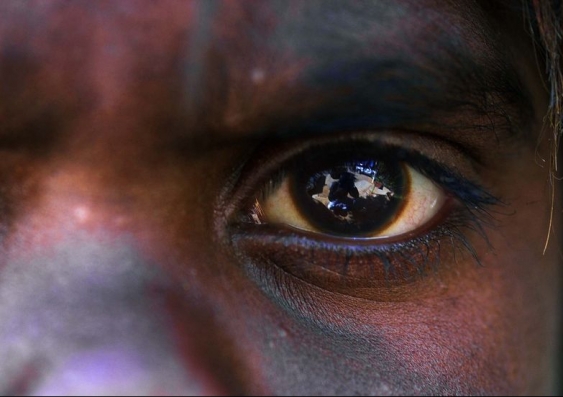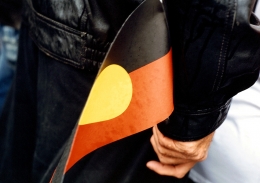Treaty with our ‘first nations’ will provide a framework of responsibility
Momentum is building for a national agreement that empowers indigenous people to make decisions about their future.
Momentum is building for a national agreement that empowers indigenous people to make decisions about their future.

OPINION The treaty debate has produced every conceivable response from our federal leaders. In 1988, prime minister Bob Hawke promised, but failed to deliver, a treaty “negotiated between the Aboriginal people and the government on behalf of all the people of Australia”. On the other hand, prime minister John Howard flatly rejected the idea in 2000, saying that “a nation … does not make a treaty with itself”.
With this history, it is easy to be pessimistic, but advocates have instead been persistent. The idea of a treaty was again pushed to the forefront last year by indigenous representatives in the Uluru Statement from the Heart. They sought a Makarrata, or treaty, to embody their “aspirations for a fair and truthful relationship with the people of Australia and a better future for our children based on justice and self-determination”.
Like other aspects of the Uluru Statement, the call for a treaty failed to win over the Coalition. Normally, this would have been the end of the story. However, this time the debate is proceeding on a different path because states and territories have stepped up to take the lead.
This began in Victoria in 2016, when the Andrews government announced it would negotiate a treaty with Aboriginal peoples. This has been no empty promise. The government has committed almost $30 million to see the process through. Last week the Victorian parliament began debate on a law that will advance the treaty process by setting down guiding principles and recognising an Aboriginal representative body.
Momentum continues to grow. Northern Territory Chief Minister Michael Gunner has initiated discussions on a treaty between the Territory and indigenous nations, as did the South Australian government before its loss at the recent election. Earlier this year, the NSW opposition announced a treaty process should it win next year’s election.

Photo: Shutterstock
Western Australia has made the most progress. Liberal premier Colin Barnett led the way in 2015 by signing the first treaty between a state government and indigenous peoples. In exchange for surrendering native title rights and interests, the Noongar people received a comprehensive $1.3 billion package relating to land, resources, governance, finance and cultural heritage. The agreement included a special law with Noongar language recognising the Noongar people as the traditional owners of the southwest region of the state.
Barnett made clear the significance of this settlement. He declared it to be a “breakthrough agreement, a historic achievement in reconciliation” and an “extraordinary act of self-determination by Aboriginal people” that provides them “with a real opportunity for independence”. In saying this, the premier recognised the Noongar agreement marked a break with the past.
When the British colonised new lands in past centuries, they made agreements with the local peoples to resolve differences and preserve indigenous sovereignty and rights. These treaties were far from perfect but even today shape the way in which nations such as the US, New Zealand and Canada are governed.
Treaties made in the US from as far back as the 1600s enable Native American tribes to exercise powers of self-government. The 1840 Treaty of Waitangi provides political and economic backing for the aspirations of New Zealand’s Maori people. And in Canada, new treaties are being made to compensate indigenous peoples for the loss of their lands and to provide a sustainable economic foundation. Far from being symbolic agreements, these treaties drive practical outcomes.
The most appropriate form of recognition today is not mere symbolism, but practical change that lays down better structures and relationships for the future.
Among all nations settled by the British, Australia is the odd one out. Only here were treaties not made with the locals. Instead, the nation was built on the fiction that the continent was terra nullius, or no man’s land. Aboriginal people were classed by the law as “barbarians”. They were “so low in the scale of social organisation” that the law did not recognise them as human beings with rights and interests.
The High Court dispelled some of these myths in its famous 1992 decision in Mabo. Rather than being uninhabited, justices William Deane and Mary Gaudron found that it is “beyond real doubt or intelligent dispute” that Australia in 1788 was occupied by a million or more Aboriginal people. These people lived under local laws and customs that were “elaborate and obligatory”. The court found they were deserving of recognition.
The most appropriate form of recognition today is not mere symbolism, but practical change that lays down better structures and relationships for the future. The evidence from overseas shows why this is needed.
A headline finding is that redressing disadvantage depends upon indigenous people having the power to make decisions that affect them. They must be responsible for the programs designed to meet their needs and must be accountable for the successes and failures that follow
The Harvard Project on American Indian Economic Development has run hundreds of research studies over more than 30 years on what does and does not work in Native American communities in the US. A headline finding is that redressing disadvantage depends upon indigenous people having the power to make decisions that affect them. They must be responsible for the programs designed to meet their needs and must be accountable for the successes and failures that follow.
This is missing in Australia. Without a framework for responsibility provided for by a treaty, Australians cannot expect programs such as Close the Gap to achieve their potential. Nor can we expect taxpayers’ money to be well spent. On this, the Harvard Project found that when Native Americans “make their own decisions about what development approaches to take, they consistently outperform external decision makers”. It is yet another reason Australia needs treaties with its first nations.
George Williams is the Dean, the Anthony Mason Professor, and a Scientia Professor at UNSW Law.
This article was originally published in The Australian.